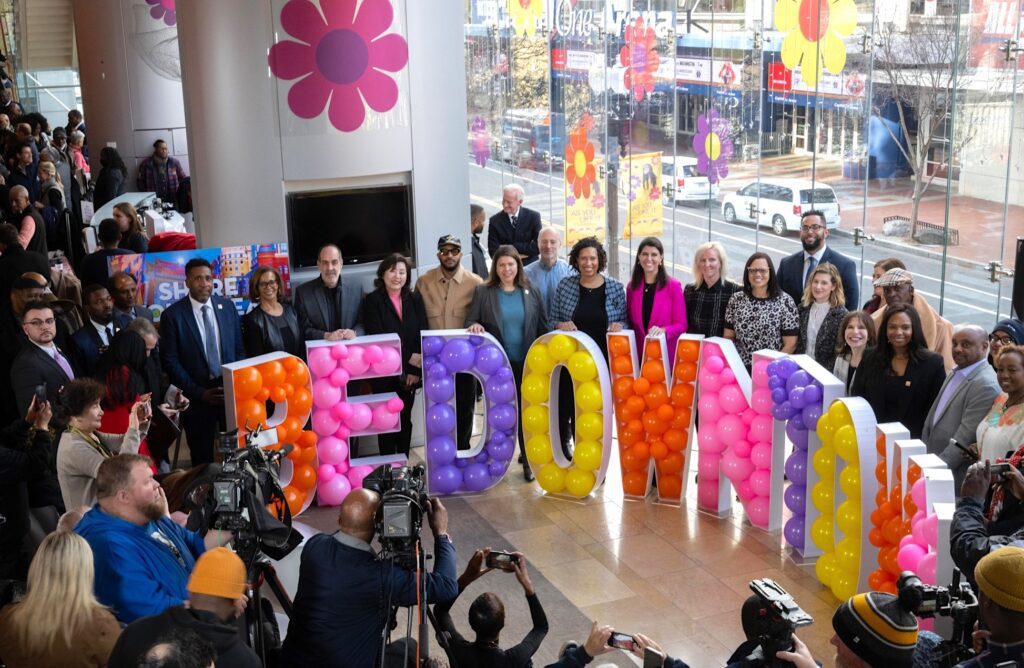Editorial: Where, What Is the Vision for D.C.?
By • February 14, 2024 0 1146

The proposed move of the Washington Wizards and Washington Capitals from the Capital One Arena in downtown D.C. to Alexandria’s Potomac Yard has rattled hometown sports fans, residents, pundits and politicians alike — with opinions back and forth — and prompting questions of what it means for Washingtonians.
Mayor Muriel Bowser responded to the splashy presentation and decision by Ted Leonsis of Monumental Sports & Entertainment, owner of the Wizards, Capitals and Mystics, to move the teams jump over the river to Virginia.
“Throughout this process, much has been said about the challenges of city life — street artists, for example, and crime,” Bowser wrote. “But I don’t believe for a minute that’s why Monumental has struck a handshake deal with Virginia. Their decision was about money and land. Period. Nor is it true that the District did not try hard enough. At every stage, we put forth the best deal we could offer at the time we could offer it.
“On the contrary, Leonsis himself points to the goose bumps he got when seeing the undeveloped land as the reason for the move. But Downtown D.C. is ripe for development, too. While we can’t currently offer 12 acres of undeveloped land, we know there’s great potential to grow an urban campus with Monumental and other Leonsis companies right in the core of the city. …
“It’s only right that D.C.’s teams stay in D.C. Leonsis has previously acknowledged the huge responsibility that comes with owning a team, saying “the teams really aren’t owned by me and my partners; they’re really owned by the city itself.” Now, I’m not a billionaire, but I do believe it’s possible to have enough money. A great legacy and reputation, however, are priceless.”
For his part, Leonsis wrote: “Between the Capitals and the Wizards, 44 percent of fans who attend games are from Virginia, 41 percent are from Maryland and 15 percent are from Washington, D.C. The teams represent the DMV, and they belong to the entire DMV. This will never change.
“The decision to move the teams to Potomac Yard is about space and opportunity. A chance to consolidate staff and teams currently located in four separate locations — so we can finally have a central headquarters. New room to innovate, more room to provide better services for our teams, services for the community and better experiences for our fans. What excites me about this opportunity is the land, the accessibility it provides and being part of the tech corridor that has been established in this neighborhood. The ability to build a smart campus from scratch. With this transformational opportunity, we believe the entire DMV community will be enriched and strengthened.”
In the DC Line, columnist jonetta rose barras wrote of Bowser’s Jan. 12 address of the impending sports divorce: “Mayor Muriel Bowser stood in a room inside the Shakespeare Theatre Company’s Harman Hall across the street from the Capital One Arena, which could be seen just behind her right shoulder. Former DC Mayor Anthony A. Williams stood to her left. Esteemed onetime city planner Andy Altman and former DC Council finance wizard Jack Evans were also in that same room. Those optics may have given someone the impression the city‘s three-term mayor was preparing to make a game-winning slam-dunk. Think again.
“Bowser and her team produced an underwhelming presentation that, I guess, had been intended to convey all is not lost in the Chinatown/Gallery Place neighborhood…
“After the potential move became public, many leaders and residents in the city began to panic, declaring the economic end of DC. They wanted to know Bowser’s plan. This week they learned it appears to be more of the same: another task force. …
“The decision as articulated by Bowser and her team to focus this new task force on Gallery Place and Chinatown — essentially tweaking a two-block area — is wholly insufficient. It seems to set aside as separate the potential development of the FBI headquarters, which is just down the street from the arena, and the growth needs of adjacent neighborhoods.
“Williams and others didn’t plot a block — they stood on a hill in Southeast and looked out at the entire city, wondering how they could transform it. Equally important, they were hard-charging, refusing to let folks get in the way of the progress they sought.
“This might be the time for the current administration to disabuse itself of its trademark timidity. Further, Bowser may want to more proactively engage museums, hotels and other private businesses in her efforts. And she could also permit herself to be seen as leading the charge for change — not just receiving reports from developers whom residents don’t know and are not necessarily inclined to trust.”
We can cite more remarks and arguments, of course, especially some choice words by Washington Post columnist Colbert King.
Still, let’s check the conclusion of a Feb. 12 Post editorial: “But no amount of money will make up for failing to get the basics right: ensuring public safety and cultivating a business-friendly climate. D.C. can no longer assume that people and businesses want to locate in urban centers; the city and its leaders must compete for them. Even if it loses this round, Washington can rally for the next.”
Our city have not yet lost its mojo — but it surely needs a fresh vision of itself. The question is who or what will make that happen?

